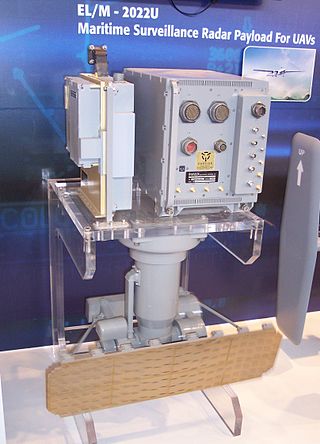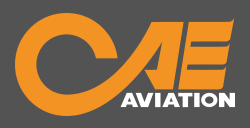
The Northrop Grumman RQ-4 Global Hawk is a high-altitude, remotely-piloted surveillance aircraft introduced in 2001. It was initially designed by Ryan Aeronautical, and known as Tier II+ during development. The RQ-4 provides a broad overview and systematic surveillance using high-resolution synthetic aperture radar (SAR) and electro-optical/infrared (EO/IR) sensors with long loiter times over target areas.

A surveillance aircraft is an aircraft used for surveillance. They are operated by military forces and other government agencies in roles such as intelligence gathering, battlefield surveillance, airspace surveillance, reconnaissance, observation, border patrol and fishery protection. This article concentrates on aircraft used in those roles, rather than for traffic monitoring, law enforcement and similar activities.

Imagery intelligence (IMINT), pronounced as either as Im-Int or I-Mint, is an intelligence gathering discipline wherein imagery is analyzed to identify information of intelligence value. Imagery used for defense intelligence purposes is generally collected via satellite imagery or aerial photography.

L3 Technologies, formerly L-3 Communications Holdings, was an American company that supplied command and control, communications, intelligence, surveillance and reconnaissance (C3ISR) systems and products, avionics, ocean products, training devices and services, instrumentation, aerospace, and navigation products. Its customers included the Department of Defense, Department of Homeland Security, United States Intelligence Community, NASA, aerospace contractors, and commercial telecommunications and wireless customers. In 2019, it merged with Harris Corporation to form L3Harris Technologies.

Aerial survey is a method of collecting geomatics or other imagery by using airplanes, helicopters, UAVs, balloons or other aerial methods. Typical types of data collected include aerial photography, Lidar, remote sensing and also geophysical data (such as aeromagnetic surveys and gravity. It can also refer to the chart or map made by analysing a region from the air. Aerial survey should be distinguished from satellite imagery technologies because of its better resolution, quality and atmospheric conditions. Today, aerial survey is sometimes recognized as a synonym for aerophotogrammetry, part of photogrammetry where the camera is placed in the air. Measurements on aerial images are provided by photogrammetric technologies and methods.

RAPTOR was a reconnaissance pod used by the Royal Air Force on its fleet of Tornado GR.4A and GR.4 aircraft. RAPTOR was manufactured by the Goodrich Corporation, initially part of UTC Aerospace Systems, but now part of Collins Aerospace.

The Breguet Br.1150 Atlantic is a long-range maritime patrol aircraft designed and manufactured by French aircraft manufacturer Breguet Aviation.
Northrop Grumman Electronic Systems (NGES) was a business segment of Northrop Grumman from 1996 to 2015 until a reorganization on January 1, 2016, merged other Northrop Grumman businesses into NGES to form a new segment called Mission Systems. NGES had originally been created by Northrop Grumman's acquisition of Westinghouse Electronic Systems Group in 1996. The Electronic Systems sector was a designer, developer, and manufacturer of a wide variety of advanced defense electronics and systems. The division had 120 locations worldwide, including 72 international offices, and approximately 24,000 employees; accounting for 20% of company sales in 2005.
The usefulness of UAVs for aerial reconnaissance was demonstrated to the United States in the Vietnam War. At the same time, early steps were being taken to use them in active combat at sea and on land, but unmanned combat aerial vehicles would not come into their own until the 1980s.

The Britten-Norman Defender is a multi-role utility transport aircraft, manufactured by Britten-Norman of the United Kingdom. It is the military version of the Britten-Norman Islander, developed for roles such as utility transport, casualty evacuation, counter-insurgency and light attack, forward air control, patrol and reconnaissance. The term 'Britten-Norman Defender' relates to all militarised variants of the BN-2 product line including the BN-2 Piston Defender, BN-2T Turbine Defender, the BN-2T-4R Defender and the stretched variant BN-2T-4S, designated Defender 4000.

ELTA Systems Ltd (ELTA) is an Israeli provider of defense products and services specializing in radar, ELINT, COMINT, C4ISTAR, Electronic Warfare, Communication, Autonomous Ground Systems, Intelligence and Cyber products.

Airborne Real-time Cueing Hyperspectral Enhanced Reconnaissance, also known by the acronym ARCHER, is an aerial imaging system that produces ground images far more detailed than plain sight or ordinary aerial photography can. It is the most sophisticated unclassified hyperspectral imaging system available, according to U.S. Government officials. ARCHER can automatically scan detailed imaging for a given signature of the object being sought, for abnormalities in the surrounding area, or for changes from previous recorded spectral signatures.
Aerial reconnaissance using heavier-than-air machines was an entirely new science that had to be improvised step-by-step. Early operations were low-level flights with the pilot often dismounting from the plane to report verbally to the nearest officers. Photographic support was urgently developed, initially requiring a full-time photographer on board to handle the heavy, awkward equipment. The interpreting of aerial images was an important new speciality, essential for accurate mapping. By 1915, air-to-ground radio was in use for reconnaissance pilots.

The Type 08 is a family of eight-wheeled amphibious, modular armored vehicle developed by Norinco for infantry fire support, battlefield logistics, and quick reaction operations. Developed in the early 2000s, the modern Chinese vehicle family were produced for more than 6000 hulls and widely deployed by the People's Liberation Army Ground Force and People's Liberation Army Marine Corps.

CAE Aviation is an aviation company based in Luxembourg providing services such as aerial surveillance, reconnaissance, parachuting and maintenance to various international governmental agencies and private operators. The business is unrelated to Canadian flight simulator manufacturer CAE.
Wide-area motion imagery (WAMI) is an approach to surveillance, reconnaissance, and intelligence-gathering that employs specialized software and a powerful camera system—usually airborne, and for extended periods of time—to detect and track hundreds of people and vehicles moving out in the open, over a city-sized area, kilometers in diameter. For this reason, WAMI is sometimes referred to as wide-area persistent surveillance (WAPS) or wide-area airborne surveillance (WAAS).
The Buckeye system is an operational airborne surveying system that provides high-resolution spatial imagery over an area of interest to support military operations involved with intelligence, surveillance, and reconnaissance. Once mounted on a helicopter or an unmanned aerial vehicle (UAV), it incorporates visual information from a digital camera and elevation data from a Light Detection and Ranging (LIDAR) system to create a two and three-dimensional colored map with orthorectified, 4 to 6-inch resolution.
L3Harris Technologies, Inc. is an American technology company, defense contractor, and information technology services provider that produces command and control systems and products, wireless equipment, tactical radios, avionics and electronic systems, night vision equipment, and both terrestrial and spaceborne antennas for use in the government, defense, and commercial sectors.

An unmanned surveillance and reconnaissance aerial vehicle, is an unarmed military UAV that is used for intelligence, surveillance, target acquisition, and reconnaissance (ISTAR). Unlike unmanned combat aerial vehicle (UCAV), this type of system is not designed to carry aircraft ordnance such as missiles, ATGMs, or bombs for drone strikes. The main purpose is to provide battlefield intelligence. Small sized short-range man-portable unmanned aerial vehicles are called miniature UAV also used for battlefield intelligence.














